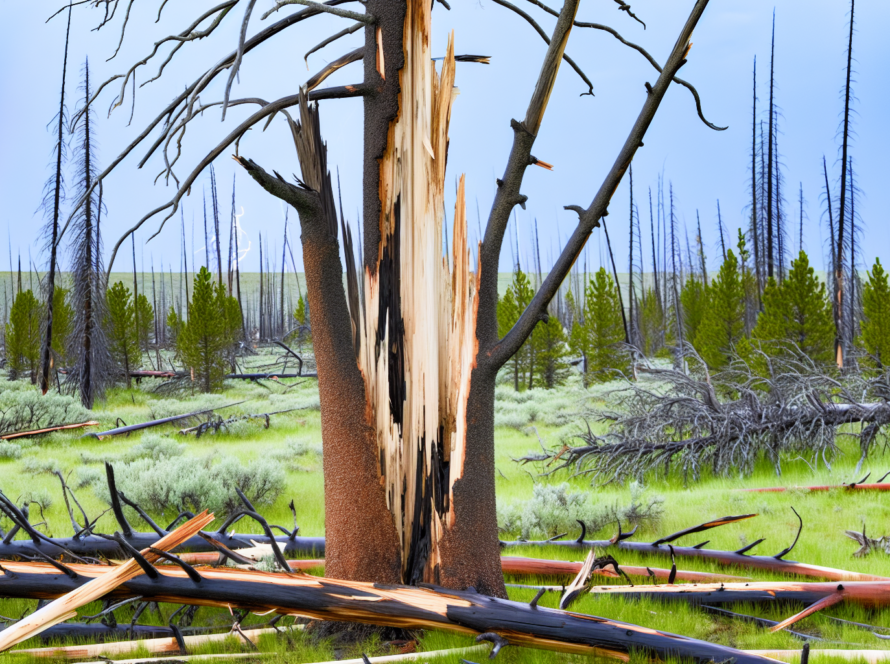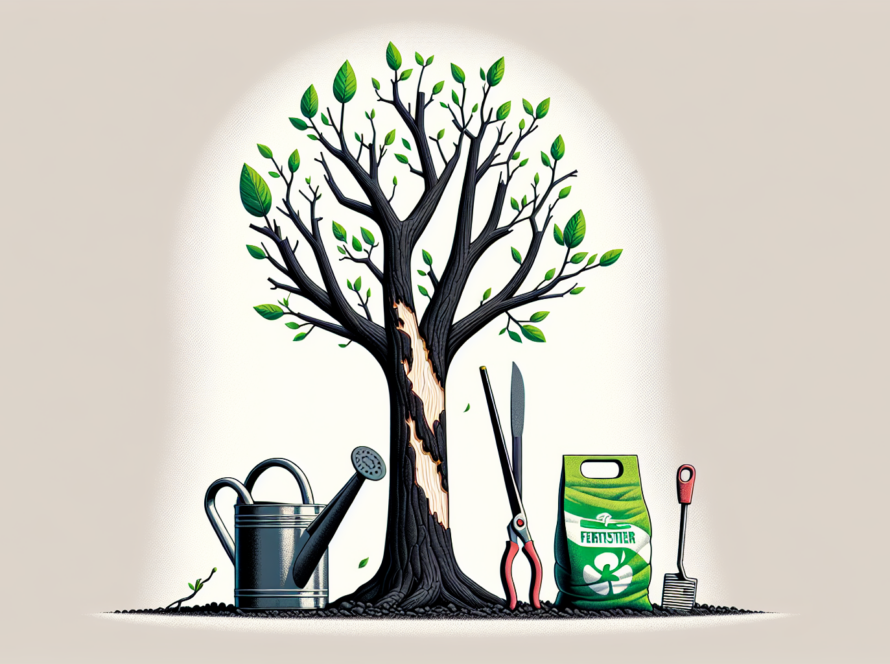When it comes to tree fungus types, knowing what you’re dealing with is critical for the health of your trees. This guide cuts through the complexity to provide a clear understanding of the fungi that may be affecting your trees and the steps you can take to manage these pervasive issues. Learn to identify, treat, and prevent tree fungus effectively.
Key Takeaways
Proper identification of tree fungi and recognition of symptoms are critical for maintaining tree health, as some fungi are harmful and lead to decay, while others are harmless.
Tree fungi are categorized based on their impact on different tree parts, including wood decay fungi, foliar fungi, and root and soil fungi, each requiring unique treatment approaches.
Prevention strategies and treatment options are crucial in managing tree fungus, involving proper tree care and environmental awareness to reduce the incidence and spread of fungal infections.
Recognizing Tree Fungus Types
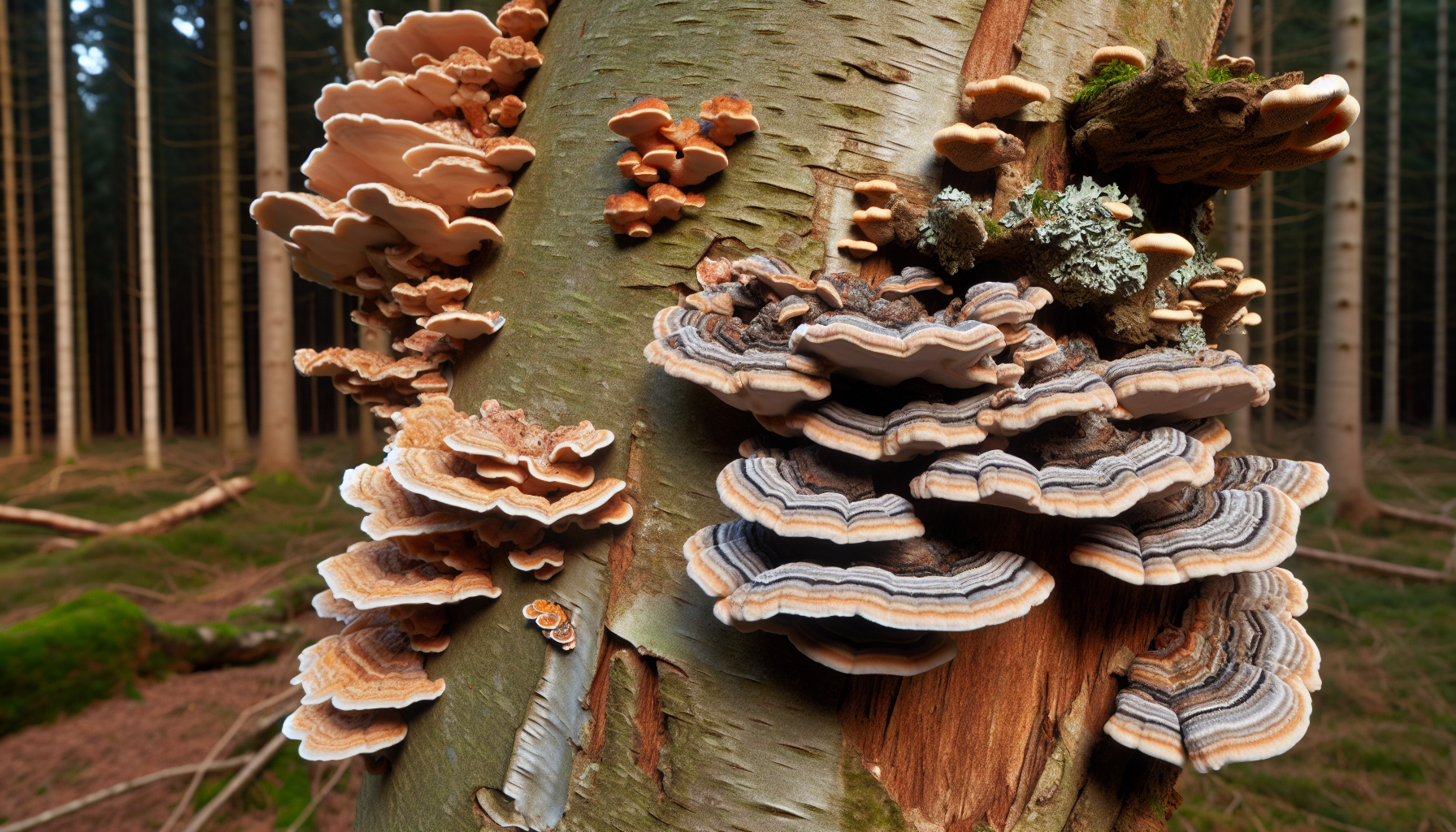
Tree care begins with the identification of tree fungus. The complexity of fungi identification might seem daunting, considering that certain types can cause destructive decay in tree trunks and limbs. However, arborists often classify diseases by symptoms due to the intricate nature of lab analysis required for fungi identification. Some fungi, particularly parasitic ones growing on living trees, can be damaging to trees, significantly impacting their health by attacking their ability to circulate water and nutrients.
Bear in mind, trees under stress from drought, injuries, or vandalism have a higher susceptibility to fungal spores. These microscopic particles can penetrate tree wood, fruits, or leaves even without open wounds, showcasing the tenacity of these organisms. Thus, early recognition and identification of tree fungus pave the way for maintaining tree health and applying appropriate fungus treatments.
Harmful vs. Harmless Fungi
Fungi exhibit a spectrum of impact on trees, ranging from non-threatening aesthetic alterations to severe health issues that threaten the tree’s longevity. Fungi that grow only on dead parts of trees or do not invade the wood structure are generally considered less harmful. They may alter the appearance of the tree but do not pose a significant risk to its health or longevity.
On the other hand, harmful fungi cause decay within living trees, posing a significant threat to the tree’s structural integrity and overall health. Take the example of sooty mold, a condition that results in a cosmetic black soot on leaves, growing on the honeydew produced by insects rather than directly harming the tree. While it doesn’t harm the tree directly, it’s a sign of an underlying insect issue that needs to be addressed.
Therefore, distinguishing between harmful and harmless fungi is key in determining the right fungus treatment for trees.
Signs of Fungal Infection
Being able to identify signs of fungal infection in trees plays an integral role in tree care. Common signs include discoloration, wilting, and unusual growths. These are general symptoms, but the manifestation of fungal diseases in trees may be more specific. Symptoms such as yellowing leaves, thinning foliage, root rot, and reddish ooze on the bark are telltale signs of fungal infection.
A powdery mildew fungal infection, for instance, is indicated by powdery gray spots on affected trees. On the other hand, cankers, which are dead areas on a tree, can usually be found on the bark or branches and are a sign of fungal disease. These signs offer crucial insights into the type of fungus affecting the tree, aiding in the execution of an effective fungus treatment plan.
Major Tree Fungus Categories
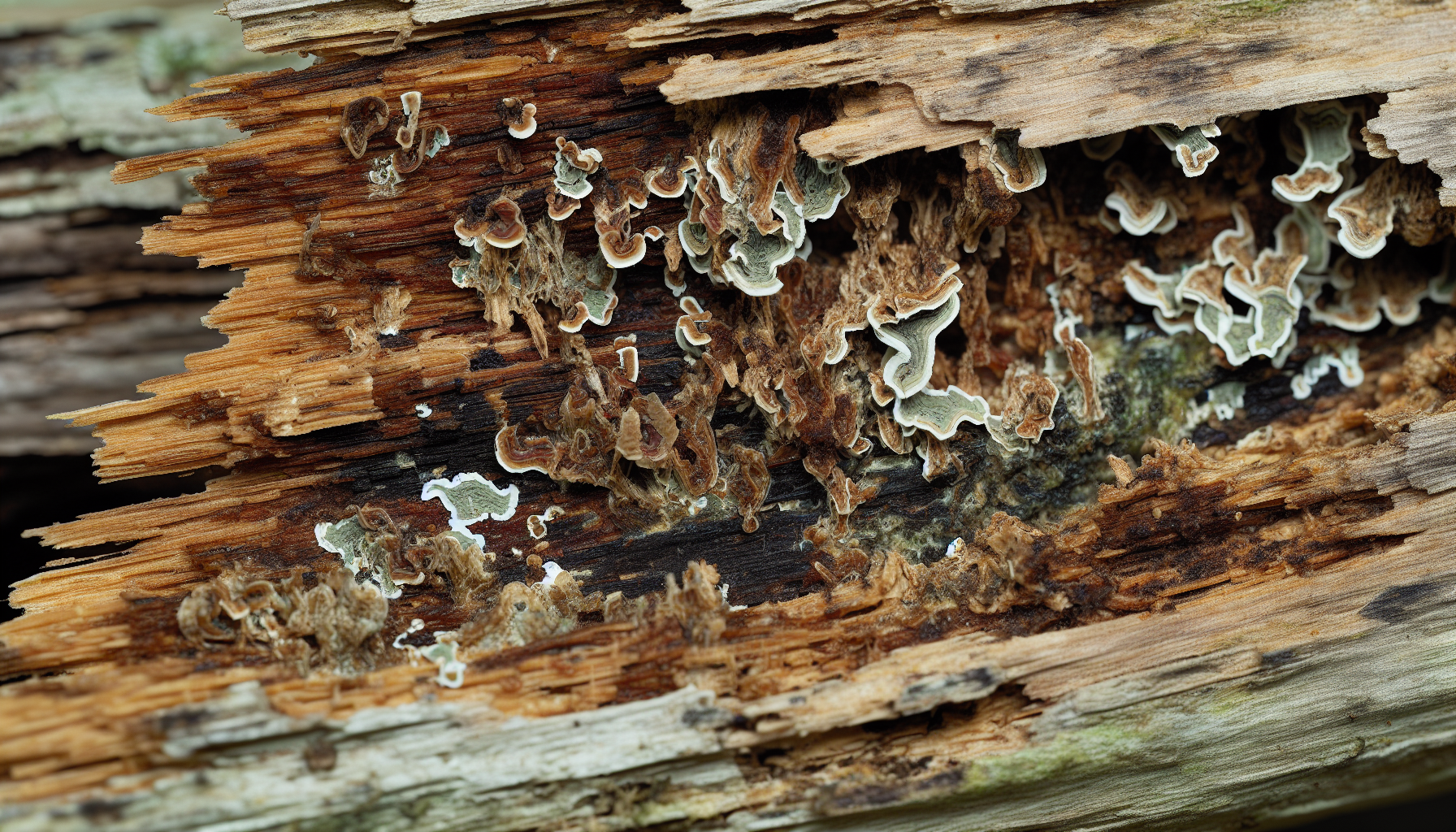
Fungi, a diverse group of organisms that belong to their own kingdom separate from plants, animals, and bacteria, can be categorized into several types based on their impact on trees. These categories include wood decay fungi, foliar fungi, and root and soil fungi, each affecting a different part of the tree and thus presenting different challenges for tree care.
For instance, wood decay fungi, like brown rot and white rot, decompose the wood, causing structural damage to trees. Foliar fungi, on the other hand, affect the aerial parts of the tree, especially the leaves, leading to diseases like powdery mildew and anthracnose. Root and soil fungi, like Armillaria and Phytophthora, attack the tree’s root systems and can cause widespread damage to various species. Comprehending these categories aids in tree fungus identification and the application of appropriate fungus treatments.
Wood Decay Fungi
Wood decay fungi pose a significant threat to tree health by degrading the cell wall components of trees, leading to the weakening of the tree structure. They can be classified into heartwood and sapwood attackers, encompassing white rots, brown rots, and soft rots. Each type of decay has its unique characteristics.
For example, different types of fungi can cause different types of decay in wood:
White rot fungi break down lignin and cellulose, leaving the wood feeling moist, soft, spongy, or stringy, with a white or yellow appearance.
Brown rot fungi decay cellulose and hemicellulose, leaving behind the brown lignin and causing the wood to become dry and crumble into a cube-like texture.
Soft rot fungi are caused by bacteria and fungi that slowly break down cellulose, hemicellulose, and lignin, leading to gradual but significant damage over time.
The presence of fungal fruiting structures, such as mushrooms and conks, which form fruiting structures, indicates advanced decay which may suggest extensive internal damage in the tree. Therefore, being able to identify these signs is essential for effective management of wood decay fungi.
Foliar Fungi
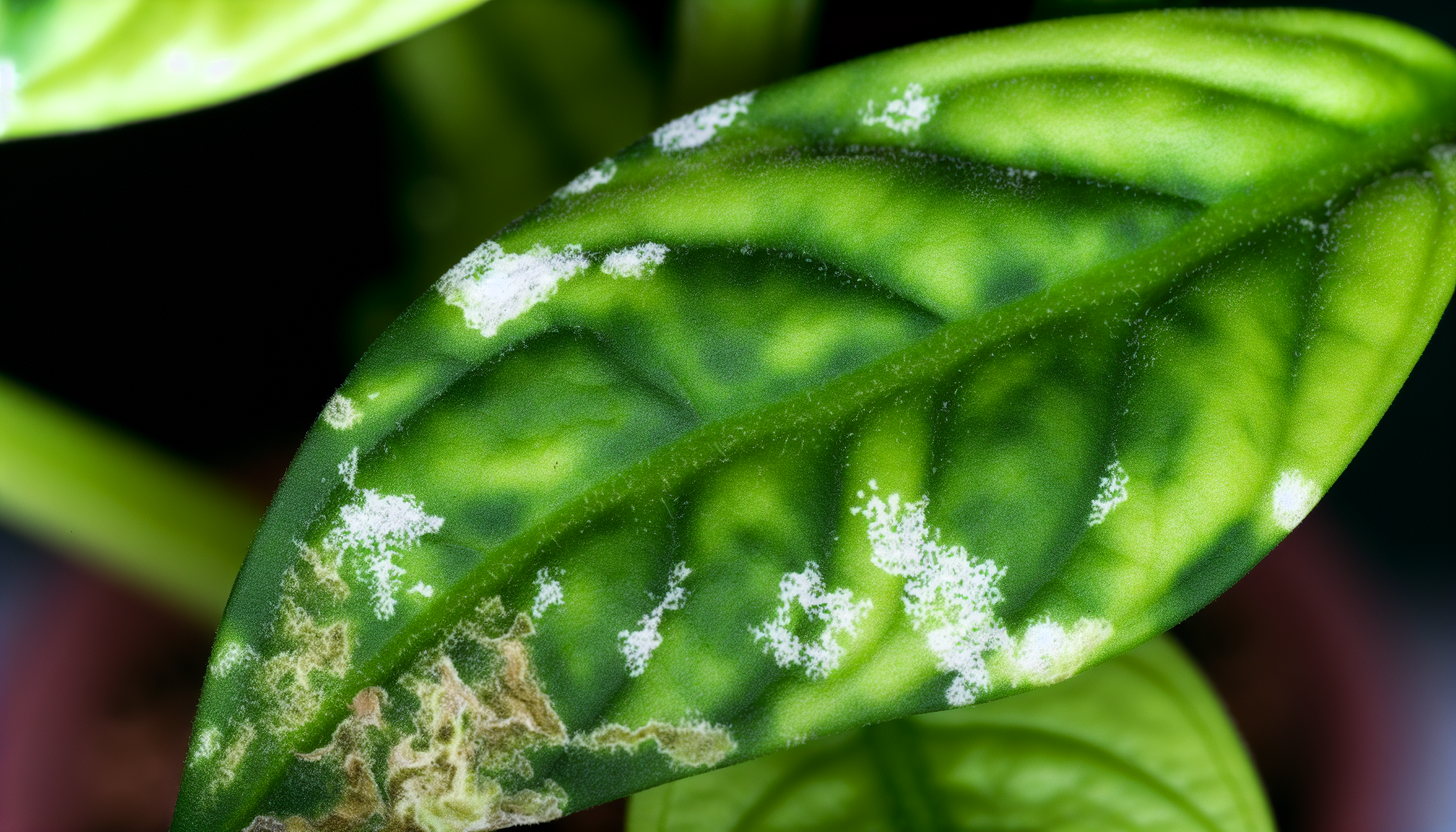
Foliar fungi are a unique category of fungi that attack the foliage of trees, causing the following issues:
Destroying leaves and delicate stems
Significantly impairing a tree’s ability to conduct photosynthesis
Causing defoliation
Ruining the appearance of ornamental trees, thereby affecting overall tree health.
Examples of foliar fungi include:
Powdery mildew: presents as a white powdery appearance that affects leaves, stems, shoot tips, and blossoms.
Anthracnose: causes tan or brown spots on leaves that can lead to tree dieback and is especially prevalent in spring.
Oak leaf blister: causes blister-like spots on oak leaves.
Tar spot on maples: causes black spots on maple leaves.
Rust fungi: require two unrelated hosts to complete their life cycle.
Understanding these fungi types is critical in preserving the health of landscape trees.
Root and Soil Fungi
Root and soil fungi, including species like Armillaria and Phytophthora, lead to diseases such as root rot and butt rot, which are damaging to both hardwoods and conifers. Symptoms indicative of root rot include:
Browning or yellowing of leaves
Wilting
Leaf drop
Stunted growth
A black film or mushrooms on the tree can signify Armillaria root rot, shot hole fungus, turkey tail fungus, or sooty mold.
These types of fungi thrive in wet or overly moist conditions, particularly when poor drainage or overwatering leads to root oxygen deprivation and subsequent decay. Preventing root and soil fungal diseases involves careful avoidance of tree wounds which can serve as entry points for such pathogens, emphasizing the need for mindful gardening practices.
Monitoring these symptoms and adhering to good gardening practices can mitigate the spread of these destructive fungi.
Identifying Common Tree Fungus Types
There are several common tree fungus types that arborists and tree lovers alike should be familiar with. These include:
Dutch Elm Disease
Oak Wilt
Verticillium Wilt
Chestnut Blight
Hypoxylon Canker
Each of these diseases has distinctive symptoms and affects specific tree species.
For instance, trees can be affected by various diseases and fungi, such as:
Bracket fungus or sulfur fungus, which causes yellowish to orangish growth on tree trunks
Thousand Cankers Disease, which primarily affects black walnut trees
Anthracnose, which is a common disease in dogwood species and can lead to tree death
Tar spot, which affects maple and sycamore trees
Hypoxylon Canker, which often affects oak species
These are just a few examples of the diseases and fungi that can impact trees. It’s important to identify and address these issues to ensure the health and longevity of your trees.
Knowledge and identification of these common tree fungus types enable more effective management and protection of trees from these detrimental fungi. Identifying tree fungus is crucial for maintaining tree health.
Dutch Elm Disease
Dutch Elm Disease is a destructive tree disease caused by the fungi Ophiostoma ulmi and Ophiostoma novo-ulmi, with the latter being the more virulent strain. The disease affects all native species of elm, including American elm, red or slippery elm, and rock elm. Characterized for its aggressive nature, Dutch Elm Disease can act as a parasite and saprophyte, leading to the rapid decline and death of infected elms.
Symptoms of Dutch Elm Disease often begin with yellowing and wilting of leaves, and dark streaks along the sapwood of wilted branches become visible under the bark. These symptoms typically first appear in late spring and early summer but may occur at any time during the growing season. The disease spreads via elm-bark beetles that carry fungal spores to healthy elms.
Management of Dutch Elm Disease involves the development of resistant or tolerant hybrid elms, and proactive measures like the use of fungicide sprays.
Oak Wilt
Oak wilt is another common tree disease caused by the fungus Bretziella fagacearum, primarily affecting oak trees, especially red oaks. The Bretziella fagacearum fungus disrupts the water-conducting system of the tree, leading to:
wilting
leaf discoloration
defoliation
the eventual death of the tree.
Symptoms of Oak Wilt include:
Wilting
Browning out of season (spring or early summer)
Leaf drop
Leaves that appear dull green/bronze and water-soaked
Following the death of the infected tree, spore-bearing fungal mats develop under the bark primarily in the fall or spring, further contributing to the spread of the disease.
Identification of these symptoms is key to safeguarding oak trees and executing efficient fungus treatments.
Verticillium Wilt
Verticillium wilt is caused by the fungus Verticillium dahliae and infects many types of deciduous trees and shrubs. Symptoms of Verticillium wilt include wilting, yellowing, and discoloration of foliage, alongside dark streaks on the wood grain under the bark of infected branches. The disease spreads upward within the plant, causing nutrient and water transport issues that may lead to branch die-off and can result in tree death in a single season or a gradual decline over several seasons.
Trees that are commonly affected by Verticillium wilt include:
Ash
Box elder
Catalpa
Elm
Maple
Redbud
Tulip tree
Identifying and understanding these symptoms is essential for protecting trees from Verticillium wilt and applying suitable fungus treatments.
Preventing and Treating Tree Fungus
Maintaining the health of trees is the first line of defense against fungal infections. Here are some preventative measures you can take to reduce the risk of fungal infections:
Ensure proper soil drainage
Avoid overwatering
Remove fallen leaves
Implement crown thinning to improve air circulation
Healthy, well-nourished trees have natural resistance to most fungi and are less likely to succumb to fungal infections, unlike susceptible trees. When a tree appears healthy, it is often due to its ability to fend off these infections.
Treatment options for tree fungus infections include tree fungus treatment methods such as:
Pruning infected parts and sanitizing equipment
Sanitizing gardening tools to prevent the spread between plants
Working with tree service professionals for severe infections
In certain cases, the application of fungicides may be necessary to prevent tree fungus
Hence, prevention and treatment strategies are both crucial in the management of tree fungus.
Prevention Strategies
Preventing tree fungus starts with maintaining tree health through proper care, including:
Correct pruning to minimize wounds
Keeping plants vigorous with appropriate irrigation and a good growing environment
Ensuring that trees receive the right amount of nourishment to prevent fungal infections
Building up tree health allows the tree to utilize its own immune system to fight infections effectively.
To prevent root rot and other moisture-related infections, trees should be planted in well-drained soil while avoiding overwatering. Some strategies to reduce the risk of fungal diseases include:
Selecting plant varieties labeled as resistant to common diseases, such as those indicated by ‘FNV’ for resistance to Fusarium, nematodes, and Verticillium.
Soil solarization during summer.
Leaving the site plant-free for a year to lessen pathogen presence in the soil.
These strategies can be instrumental in protecting fruit trees and helping to protect trees from detrimental fungal diseases.
Treatment Options
When it comes to treating fungal infections in trees, a professional tree inspection is key to determining the necessary treatment. Pruning infected branches or roots may help contain the spread of fungal infection, which is a crucial step if the tree is considered viable.
Fungicides, including natural options like vinegar and chamomile tea, as well as chemical treatments such as copper fungicides and sulfur-based options, are part of the treatment arsenal against tree fungi. However, the increasing incidence of antifungal resistance is creating a challenge in effective management of tree fungal diseases and posing potential environmental threats. Therefore, a balanced and well-informed methodology is necessary for treating tree fungus.
Tree Fungus and the Environment
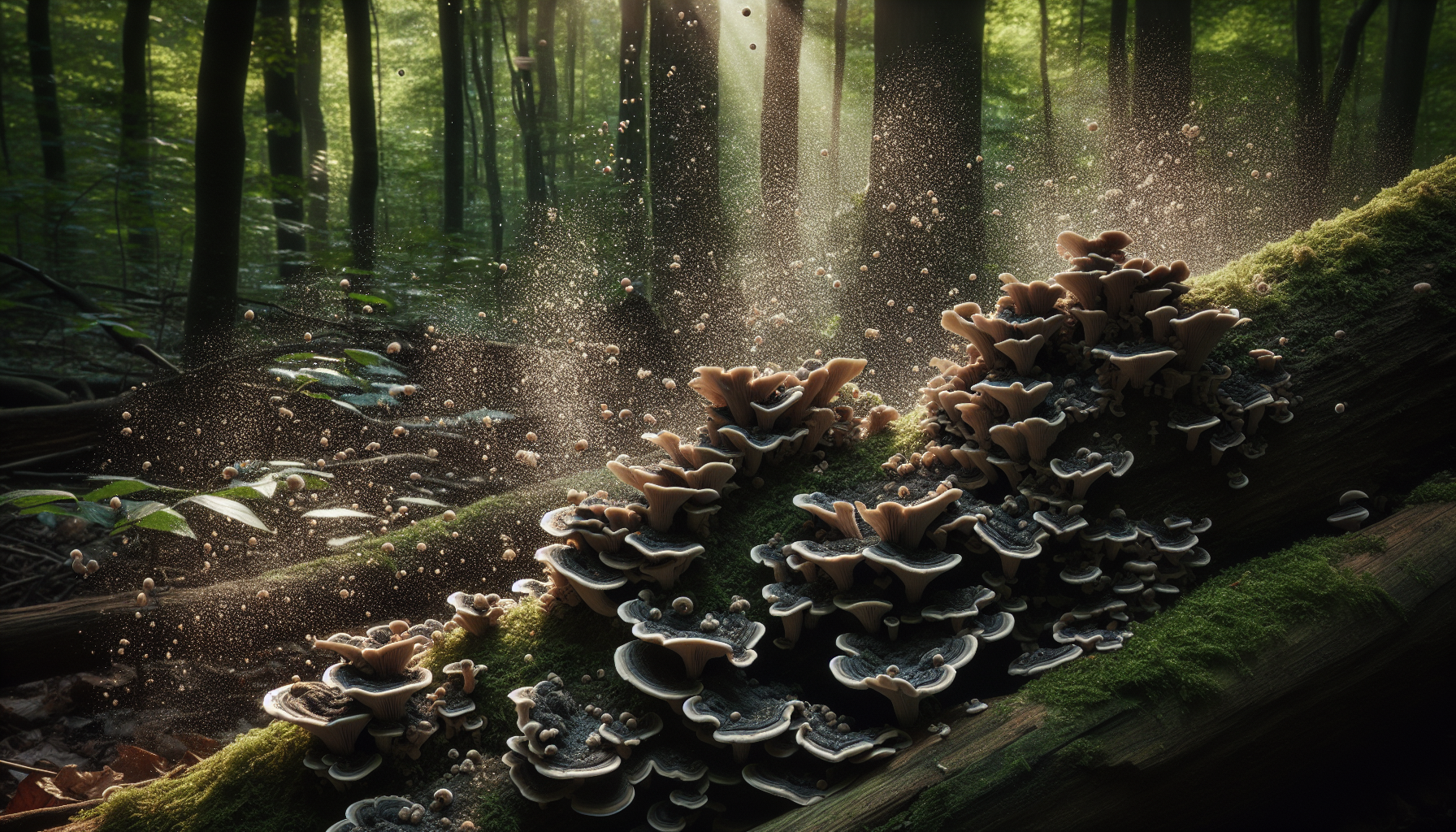
The impact of tree fungus doesn’t stop at the health of individual trees. Spores are the means by which fungal diseases spread, and they can traverse the environment in many ways, affecting the ecosystem. When spores spread, they have the potential to infect nearby plants, which can lead to changes in plant diversity and health in an ecosystem.
As plant communities are affected by the spread of fungal diseases, the animals that rely on these plants for food and habitat may also be impacted.
Fungal Spore Dispersal
Spore dispersion in fungi can occur through various vectors such as:
Wind
Water
Insects
Gardening tools
Human contact
For example, elm bark beetles act as a vector for DED fungus by carrying spores from one tree to another as they lay eggs under the bark of dead or dying trees. Animals, such as the swamp wallaby, consume mushrooms and inadvertently disperse the fungal spores over large distances through their feces as they move through forests.
Even human contact can play a role in the spread of fungal spores. For instance, sanitizing hands and clothing is crucial to prevent the spread of fungal spores, especially after contact with infected trees. Comprehending these spore dispersal methods can aid in devising strategies to curb the spread of tree fungus.
Environmental Factors
Climate change and extreme weather events can also indirectly contribute to the spread and growth of tree fungus by creating conditions conducive to fungal spores. Changes in temperature and precipitation due to climate change can expand the geographic areas where certain fungi can survive, potentially leading to increased tree fungus infections. Extreme weather events such as:
storms
heatwaves
droughts
wildfires
can create conditions that promote the growth and spread of fungal spores, affecting trees and plants.
Moreover, fungal adaptation to heat is a concern, as with shifting temperatures, fungi may evolve to live in warmer conditions, which could influence their impact on trees and other plants. The CDC is monitoring trends in fungal diseases and supporting research to understand the effects of climate change on fungi, their habitats, and the impact on plant health. Comprehending these environmental factors is imperative for managing tree fungus amidst climate change.
Summary
In conclusion, understanding tree fungi, their types, and the impacts they can have on tree health and the environment is crucial. From identifying different types of tree fungus and recognizing the signs of fungal infection, to learning about prevention and treatment strategies, every piece of knowledge adds to our ability to protect the green giants that grace our landscapes. The battle against tree fungus is ongoing, but equipped with the right knowledge, we can ensure that our trees remain healthy and vibrant, standing tall against the silent invaders.
Frequently Asked Questions
What kind of fungi grows on trees?
Bracket fungi, such as oyster mushrooms and porcelain fungus, are common types that grow on trees. While some are edible and valuable, they can also be damaging to trees.
What fungus is killing my trees?
It’s important to identify the specific type of fungus affecting your trees, as there are various types such as oak wilt, root rot, and sooty mold that can cause harm. Seek professional help to accurately diagnose and treat the issue.
What does tree rot or fungus look like?
Tree rot or fungus looks like dark brown, brittle wood with a cube-like appearance as it dries. This is caused by a fungus that breaks down hemicellulose and cellulose, leaving lignin unaffected.
What is the difference between harmful and harmless fungi?
Harmful fungi cause decay within living trees, posing a significant threat to the tree’s structural integrity and overall health, while harmless fungi grow only on the dead parts of trees or do not invade the wood structure. It’s essential to distinguish between the two to protect the health of trees.
How can one prevent tree fungus?
To prevent tree fungus, focus on maintaining tree health through proper care, improving soil drainage, avoiding overwatering, removing fallen leaves, and implementing crown thinning for better air circulation. These measures can greatly reduce the risk of fungal infections.



